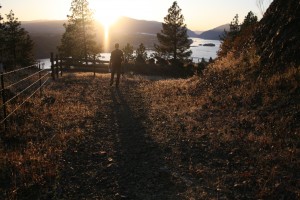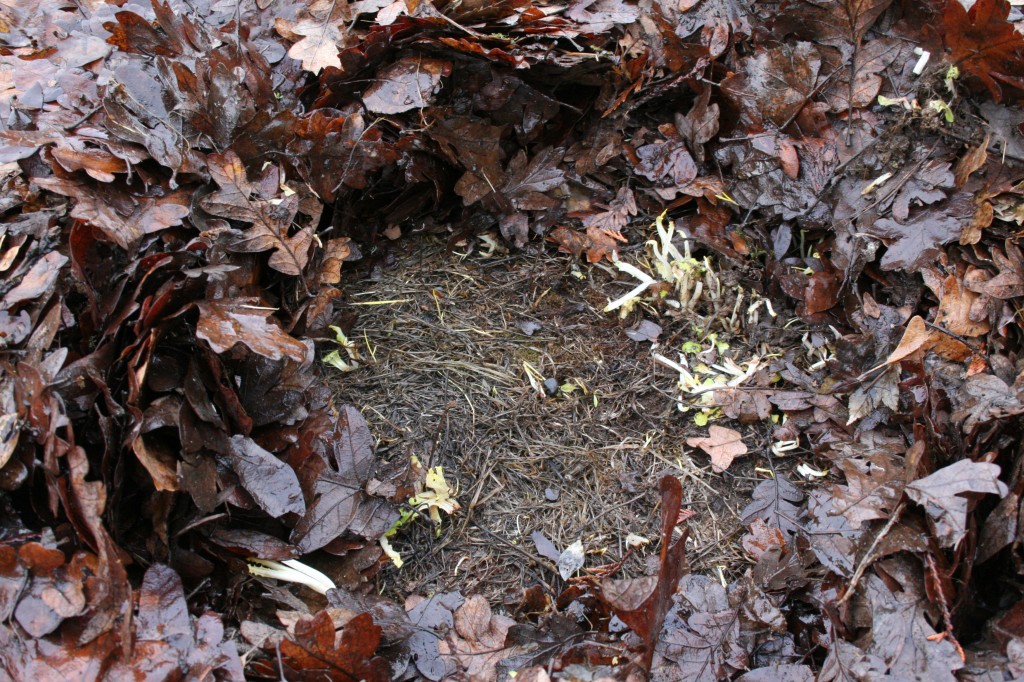Here in the Columbia River Gorge, the bees are beginning their forays into spring, collecting Alder pollen and minerals from the soil. That means they’re beginning to raise brood, or new babies. I’m seeing them clambering around on the soil a lot, particularly freshly dug areas, which leads me to write a story about how to improve soil naturally, as the bees are apothecaries and need healthy spots for gathering their wares. 
Like all things of value and integrity, soil takes time to make, something like several hundred years for every inch. The great deciduous forests of the Midwestern United States built eight feet of black, carbon-rich topsoil from leaf litter alone. It was on this soil that America became a breadbasket of the world. Unfortunately we haven’t been great keepers of that soil, and most of it now resides in the Gulf of Mexico, having been washed from farmland tributaries into the Mississippi River. Improving your soil and becoming a steward of it wherever you are is an exercise in delayed gratification for sure, however it will only take a few months or years to see dramatic results! I will show you how I am doing it in my own garden, from a rough quack-grass infested patch of ground, to a veritable Eden in a few months.
Let the Worms do the Work
Here in the Northwest, our valley soils are comprised of silt washed down from the mountains. This silt is made up of layers of tiny platelets that adhere to one another, and when stuck together, make sticky, blocky clay soil that resists water infiltration. These ‘chips off the old block’ of mountain volcanoes are chock-full of minerals that plants love. In addition to a mild climate, mineral rich soils is one of the reasons why we have such a large plant growing community and industry. In order to unlock these minerals, carbon, in the form of composted vegetative matter, manure, or leaf litter must be added to the soil. The presence of carbon will attract worms (and microbes) who will digest it and excrete castings, thereby improving soil tilth, and in effect mix the layers of soil. The worms’ movements also help improve infiltration, as they leave behind tunnels from the depths to the surface.
Leaf Mulching to Kill Grass 
I’ve used a variety of sheet mulching techniques in clients’ gardens for years: layers of newspaper, cardboard, paper rolls and even organic burlap topped with compost and it is a very effective way to kill the most pernicious grass, like quack-grass and make new garden beds. Here at our new home, we are inundated by quack-grass, so I decided this fall to bury our backyard in it’s entirety with leaves, Oregon White Oak leaves mostly. (Ever notice how its tough to grow lawn under trees, and how grass dies if you leave the leaves on it too long?) I took advantage of my neighbors’ propensity to bag their leaves and gathered approximately 8 cu. yards of them in my spare time.
I spread approximately 8-10″ of leaves in November. After three months the leaves compacted to about 5-6″ and have already browned-out the quack grass. As you can see in the photo the dandelion is showing color and will most likely poke through. That’s okay, because we need bee forage here and I eat dandelion greens! http://melissabees.com/thats-the-spirit-make-an-easy-eden-right-here-on-earth-for-the-bees/ (The ones that are growing too close to the veggies I want will be pulled.) The grass will continue to cook under the heat of the spring sun, and some of it may poke through, but that’s okay because I have a plan for that scenario, so stay tuned. 
Birds Love Leaf Litter
We have some serious bird turf wars going on since the leaves went down this fall. Yesterday morning, after waking to the sound of quail scratching and pecking under the window, there was a flock of Cedar Waxwings, Junkos and Robins duking it out for supremacy in the backyard. We don’t even have a feeder out yet- just the leaves on the ground, which harbor thousands of insects! The birds have easy pickings as well as a place to gather water, as the leaves hold moisture as well as bugs.
Soul Soil
Quite a few of our neighbors have ‘manicured’ landscapes of lawn, rock, bark dust and a narrow selection of plants, which I have witnessed being sprayed with herbicides. It warms my heart to see that our backyard with it’s brown layering of leaves (step one in the preparation for a garden) has already become an oasis for wildlife! This one small act has far reaching implications. I hope you are inspired to work with the land around your home. In keeping the soil, you will make homes for many souls, including your own. Stay tuned for Part II.
Melissa